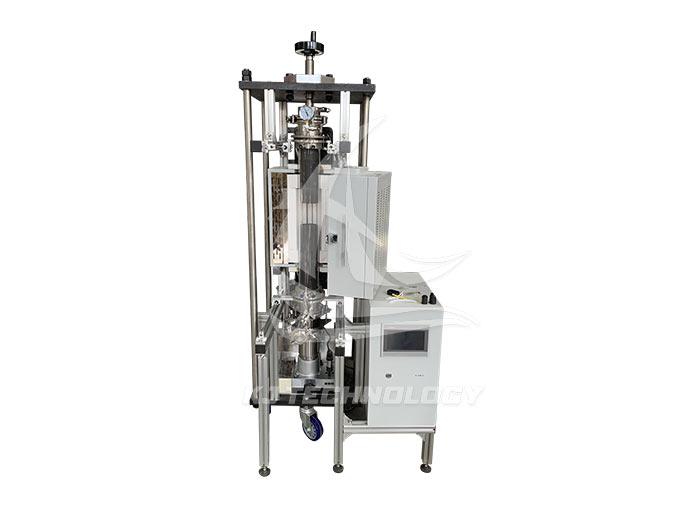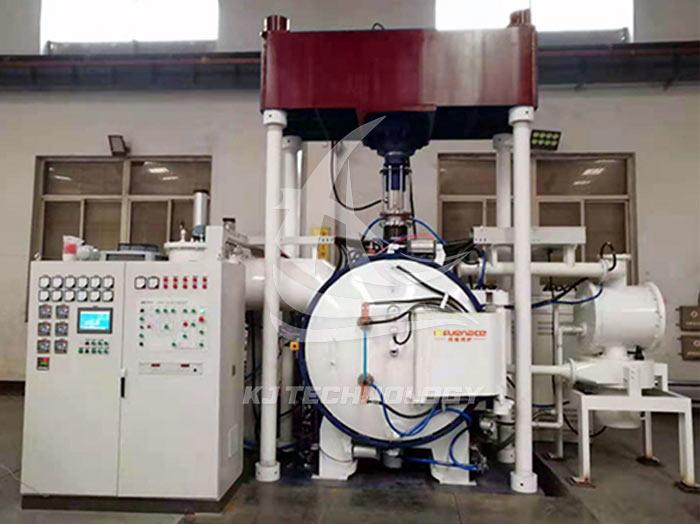Common faults and troubleshooting methods of customized ceramic sintering vacuum furnace
 08-28-2025 Author: KJ technology
08-28-2025 Author: KJ technology
Customized ceramic sintering vacuum furnace, as a precision heat treatment equipment, common faults can be classified into five categories: vacuum system, temperature control, mechanical structure, electrical system, and auxiliary system. The following are specific faults and troubleshooting methods:
1. Vacuum system malfunction
Insufficient vacuum degree
Possible reasons: Vacuum pump malfunction (such as pump oil contamination, insufficient or too thin), aging or damaged vacuum seals, presence of leakage points, insufficient pumping time, clogged pumping filters, etc.
Exclusion method:
Check the operation of the vacuum pump, clean the vacuum pump and replace it with new oil.
Clean or replace damaged seals, such as solenoid valves, pipe joints, vacuum pump suction valves, and gaskets around the working chamber.
Use a helium mass spectrometer leak detector to detect and repair leakage points.
Extend the pumping time to ensure that the vacuum degree meets the requirements.
Clean or replace the exhaust filter.
The vacuum pump has a loud noise
Possible reasons: wear or breakage of the vacuum furnace coupling, wear of the rotary blades, etc.
Exclusion method: Replace the worn coupling or rotor.
Vacuum pump oil leakage
Possible cause: clogged return valve.
Exclusion method: Remove the return valve and clean it.
2. Temperature control malfunction
High temperature alarm
Possible reasons: Improper setting of temperature controller parameters, breakdown of solid-state relay, poor contact of thermocouple probe, etc.
Exclusion method:
Check and calibrate the temperature controller parameters.
Use a multimeter to measure the output resistance of the solid-state relay. If it is broken down, replace it.
Gently shake the thermocouple probe and observe whether the temperature controller displays a large jumping amplitude. If there is poor contact, replace it.
The displayed temperature is too low to reach the set value
Possible reasons: Improper temperature controller parameter settings, damaged thermocouples, non powered or damaged heating tubes, etc.
Exclusion method:
Check and calibrate the temperature controller parameters.
Swap the thermocouple with the thermocouple on the normal thermostat, observe the temperature display, and replace it if it is damaged.
Use a test pen to test the wires connected to the heating tube and see if there is electricity coming in; If there is electricity arriving, it is necessary to use a clamp meter to measure whether the current is not significantly different from other working areas; If there is no power supply, check the circuit one by one according to the circuit diagram.
3. Mechanical structural failure
The door doesn't close tightly
Possible reasons: loose hinges, deformed buckles, damaged sealing strips at the door entrance, and deformed door panels.
Exclusion methods: Tighten the hinge, replace the buckle or sealing strip, and calibrate the door panel.
The fan has abnormal noise
Possible reasons: foreign objects inside the fan impeller, loose screws fixing the motor, etc.
Exclusion method: Clean the foreign objects inside the fan wheel and tighten the screws.
4. Electrical system malfunction
Heating does not stop
Possible cause: Poor contact or burnout of the heating time relay.
Exclusion method: Adjust the contact between the time relay and the socket or replace it.
Do not heat
Possible reasons: heating strip burnt out, heating time relay burnt out, heating wire burnt out, poor contact of temperature band switch for controlling heating, AC contactor for controlling heating not resetting, etc.
Exclusion method:
Replace the heating strip or heating wire.
Replace the heating time relay.
Repair or replace the control heating temperature band switch.
Repair (blow away foreign objects with airflow) or replace the AC contactor that controls heating.
5. Auxiliary system malfunction
Poor ventilation in the pressurized air path
Possible reasons: Blockage or presence of foreign objects in the pressurized air circuit.
Exclusion method: Straighten and unblock the pressurized air path.
Insufficient cooling water supply or blocked cooling system
Possible reasons: blocked cooling water pipeline, insufficient cooling water supply, blocked cooling system, etc.
Exclusion method: Check if the cooling water pipeline is unobstructed to ensure sufficient cooling water supply; Clean up blockages.








